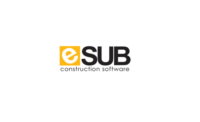As 2019 dawns, Autodesk is in the process of closing the third of a series of acquisitions it has negotiated in the past 18 months to build out a construction support workflow system to extend the reach of its flagship construction industry products—Autodesk BIM 360, Revit and AutoCAD—deeper into the process of getting projects set up and accomplished.
The latest acquisition, which is expected to close in January, is a $275-million deal to acquire the preconstruction workflow system and user network of BuildingConnected. It joins a growing portfolio of construction workflow tools Autodesk has been picking up or investing in, which has accelerated since Andrew Anagnost succeeded Carl Bass as president and CEO in June, 2017. The moves pull closer into the Autodesk orbit technologies and services that support the conversion of the ideas defined by Autodesk’s design products—the company’s traditional core offerings—into the processes and outcome of construction.
Previous acquisitions include PlanGrid for $875 million, which closed on Dec. 20 —the same day the BuildingConnected deal was announced—and Assemble Systems last July, for an undisclosed sum. PlanGrid is mobile platform to synch and deliver plans and construction documentation to crews in the field, and Assemble Systems is a SaaS platform for investing building information models with searchable, filterable and sharable data to support estimating, bidding, scheduling, project management and financials. The platform hosts the building information model and uses it as a container and graphical navigator for the data.
But in addition to those acquisitions, Autodesk also has made a series of investments through its Autodesk Forge fund in other companies with technologies that support the evolution of construction into a manufacturing process. Most of those investments were led by Autodesk and had other investors supporting them.
The Forge fund offers developers a connected cloud platform with tools that help them create customized, scalable solutions for engineering, construction and manufacturing challenges that can integrate well with core Autodesk applications. Prior to its acquisition, Assemble Systems had been one of the recipients of $12 million in Autodesk Forge Fund support in November 2017.
Those earlier investments include, in July, 2017, Autodesk's participation in a $7 million Series A funding round to support development of Smartvid.io, an image-recognition service that analyzes jobsite photos and videos to alert customers to instances of hazardous conditions, such as workers lacking personal protective equipment, the presence of unsecured ladders or missing fall protection.
In September 2017 Autodesk participated in a $2.5 million Series A funding round investing in ManufactOn, a mobile and web platform that helps construction firms plan, track, and manage both prefabrication and regular material handling. ManufactOn makes supply chain information visible to the general and trade contractors involved in a project.
At the time, Jim Lynch, Autodesk’s vice president for construction products, said the company’s investment in ManufactOn “advances industrialized construction by providing construction firms the tools needed to manage the fabrication supply chain,” adding,“ integrating ManufactOn’s service with Autodesk’s BIM 360 construction management platform enables our shared customers to reduce risk by providing critical insight into any potential supply chain problem.”
A month later, Autodesk announced yet another Forge Fund investment, of an undisclosed amount, in Project Frog, a San Francisco product and technology company that designs, develops and delivers software and prefabricated building platforms. The company leverages cloud software, regionally distributed manufacturing networks, and the just-in-time delivery of custom component building kits to provide customers with fast and predictable design and construction schedules.
In May, 2018, Autodesk participated in an investment round for an undisclosed sum in eSUB, a cloud provider of project management and labor productivity tools for subcontractors. Autodesk said, at the time, that the investment will accelerate product development for deeper integration between the Autodesk BIM 360 construction management platform and eSUB “to create a seamless user experience and develop a stronger alignment between the construction project owner, architect, and subcontractors.”
And finally, in August, the Forge Fund led an $8-million funding round for Rumbix, whose mobile technology is designed to help builders measure and manage labor productivity by digitizing and standardizing field data collection for time and attendance, production tracking and benchmarking, daily reporting, field work orders, QA/QC inspections, and health and safety reporting.
By acquiring BuildingConnected, Autodesk gets a a six-year-old, cloud-based set of services and a network of users that is designed to link general contractors, subcontractors, real estate owners and vendors into a LinkedIn-like network for bidding and bid management.
The BuildingConnected network has 700,000 individuals at 350,000 companies with profiles on the system. “The network has to be both about businesses and the individuals,” explained Dustin DeVan, CEO and co-founder of the system. “It’s a place for everyone to codify what already takes place in the physical world,” he says. “We should put everyone to a network that is designed to facilitate the type of communications that’s important to construction—especially to preconstruction.”
The network helps owners and GCs find, solicit and do business with qualified subs and vendors. Contractors use it solicit and collect pre-qualification information about individuals and firms, and manage the bidding process. Customers include Turner Construction, McCarthy, Mortenson, StructureTone, Skanska, Clark Construction, Ryan Companies and AECOM.
BuildingConnected also provides GCs and owners with project-specific risk mitigation recommendations based on subcontractor qualification data. Its tools include a subcontractor risk analysis platform, a vendor qualifications manager called TradeTapp, and Bid Board Pro, a preconstruction management tool that helps subcontractors manage invitations, deadlines and bids.
In a release announcing the BuildingConnected deal, Autodesk’s Anagnost said the company’s goal is to connect construction processes across design, build and operations by investing technologies and systems for digitizing and automating construction workflows.
“I truly believe the combination of the BuildingConnet network and all these products that Autodesk has across the construction lifecycle—including Assemble Systems and PlanGrid—is going to immediately come together and provide a flow of applications,” said DeVan.
The only question remaining now is, what’s next?




Report Abusive Comment